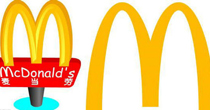|
《数据挖掘与分析》
——预测客户行为,挖掘潜在商机!
——开拓全新市场,迎接数据革命!
培训收益:
1、学会如何进行数据挖掘;
2、掌握数据挖掘各种分析方法;
3、发掘业务数据中的客户资源;
4、学会正确的经营分析思维方法。
培训背景:
随着行业发展,管理精细化的要求不断提高,企业需要更科学充分的数据分析支撑。面对海量经营数据,企业需要采用正确的经营分析思维方法,发掘隐藏在用户与业务数据中的高附加值信息资源。数据挖掘也称为数据库中的知识发现,就是从大量的、不完全的、有噪声的、模糊的、随机的数据中,提取隐含在其中的、人们事先不知道的但又是潜在有用的信息和知识的过程。它可以帮助企业在过去经验的基础上预测未来,提高市场决策能力,构筑竞争优势。
不知道大数据?你OUT了,还在看泡沫般的大数据书吗?一遍遍反复咀嚼基本概念?看的时候激动人心,看完之后两眼茫然。要真正掌握大数据技术,你需要干货!谭小芳老师的经典课程《数据挖掘》、最新力作《大数据挖掘》被众多媒体与学员称为“大数据时代的及时雨”,给你重磅干货!提示:量大货干,请自备大量饮用水!同步光盘发售,敬请来电垂询!
培训大纲:
一、数据挖掘基础概念
1、数据挖掘的概念
2、数据挖掘的历史
3、数据挖掘的背景
2、数据挖掘解决的问题
(1)分类问题
(2)聚类问题
(3)关联问题
(4)估值问题
(5)描述统计
(6)描述展示
3、数据挖掘方法论
4、数据挖掘的分类
(1)直接数据挖掘
(2)间接数据挖掘
应用案例:希阿蒙公司的市场活动
二、数据挖掘具体在移动方面的技术
1、图表分析
2、聚类分析
3、回归分析
4、序列分析
三、数据挖掘三个分析方法
1、分类(Classification)
2、估值(Estimation)
3、预言(Prediction)
四、数据挖掘技术实现
1、数据的抽取
2、数据的存储
3、数据的管理
五、获取并规范数据
1、数据库导入数据
2、规范导入的数据
3、特殊字符的处理
4、数据格式的处理
5、工作表数据整理
六、快速制作精美实用图表
1、使用自选的图形
2、图片个性化图表
3、图表显示最大值
4、图表显示最小值
5、图表显示平均线
6、学会资金流动图
7、预算对比分析图
8、指标同比分析图
9、动态交互的图表
10、产品分类统计图
11、数据变化调整图
12、最新数据动态图
13、不同时段动态图
14、不同地区动态图
15、计划实际完成比较图
案例:如何通过数据了解、预测销售波动?
七、灵活运用数据透视表
1、数据进行分组
2、分类汇总分析
3、销售分布情况
4、同步显示报表
5、纵向差异比较
6、快速查看明细
7、快速筛选数据
8、快速汇总数据
9、快速汇总其他数据
10、快速找出数据差异
11、信息表达多样化的报表
12、销售数据的序列与预测
13、分析各个客户在不同地区的市场占有率
14、如何将每个分类的汇总数据显示为100%
15、在Powerpoint上创建并演示数据透视图
八、数据仓库与挖掘应用实例
1、数据仓库的数据加载
2、数据仓库的数据钻取
3、数据挖掘模型的设计
4、数据挖掘工具的应用
5、数据仓库客户端界面的设计
课程案例选登:
案例1:Drug Treatments: In this case, imagine that you are a medical researcher compiling data for a study. You have collected data about a set of patients, all of whom suffered from the same illness. During their course of treatment, each patient responded to one of five medications. Part of your job is to use data mining to find out which drug might be appropriate for a future patient with the same illness.
药物治疗(医疗业):在这个案例中,想象你是一个医学研究人员,并收集许多患有相同疾病的病患资料。在他们的治疗过程中,每一个病人会被记录对哪一种药物有疗效(总共有五种针对此疾病的药物)。此案例的目的是想利用数据挖掘(分类模型-多目标决策树(Decision Tree))找出,哪种药物适用于哪一种类型的病人。
案例2:Modeling Customer Response: This case is based on a company that wants to achieve more profitable results in future marketing campaigns by matching the right offer to each customer. Specifically, this case identifies the characteristics of customers who are most likely to respond, based on previous promotions, and generates a mailing list based on the results.
对客户响应建模(零售业):本案例是某公司希望通过提供客户对的营销活动,在未来实现更多的获利。此案例的目的是想根据以往的促销活动,利用数据挖掘(分类模型-决策列表(Decision List))找出会对营销活动有响应的客户特征,并根据建模的结果产生要邮寄的促销客户名单。
案例3:Classifying Telecommunications Customers: Suppose a telecommunications provider has segmented its customer base by service usage patterns, categorizing the customers into four groups. If demographic data can be used to predict group membership, you can customize offers for individual prospective customers.
:电信客户分类(电信业):假设某电信服务提供商通过客户使用服务的方式,将客户分为四类人。此案例的目的是想根据人口统计数据(分类模型-多目标罗吉斯回归(Multinomial Logistic Regression)),利用数据挖掘找出这四类人的特征,并发掘这四类人的潜在新客户。
案例4:Telecommunications Churn: Suppose a telecommunications provider is concerned about the number of customers it is losing to competitors. If service usage data can be used to predict which customers are liable to transfer to another provider, offers can be customized to retain as many customers as possible. This example focuses on using usage data to predict customer loss (churn).
电信客户流失(电信业):假设某电信服务提供商非常关注客户流失到竞争对手的数量。假如服务使用的数据可以用来预测哪些客户有可能被转移到另一个供货商,则此供货商可提供客制化的优惠,以尽可能留住客户。此案例的目的是想根据服务使用的数据,利用数据挖掘(分类模型-二元罗吉斯回归(Binomial Logistic Regression))来预测客户的流失。
案例5:Forecasting Bandwidth Utilization: An analyst for a national broadband provider is required to produce forecasts of user subscriptions in order to predict utilization of bandwidth. Forecasts are needed for each of the local markets that make up the national subscriber base. This example will use time series modeling to produce forecasts for the next three months for a number of local markets.
预测带宽使用率(通讯业):某全国宽带网络供货商的分析师需进行客户使用网络的预估,以便预测带宽的使用。全国网络的使用是全国各局域网络使用的加总,因此分析师需逐一对给个区域市场进行带宽使用的预测。此案例的目的是想利用数据挖掘中的时间序列模型(预测模型-简单时间序列(Simple Time Series))来预测每个区域市场下三个月的带宽使用量。
案例6:Forecasting Catalog Sales: A catalog company is interested in forecasting monthly sales of its men’s clothing line, based on their sales data for the last 10 years. This example takes a closer look at the two methods that are available when choosing a model yourself—exponential smoothing and ARIMA.
预测型录商品的销售(零售业):某型录公司希望根据过去10年的销售记录,利用数据挖掘来预测男装生产线每月的销售。此案例的目的是想利用数据挖掘中的两个时间序列模型-Exponential Smoothing和ARIMA(预测模型-复杂时间序列(Exponential Smoothing & ARIMA))来解决这个问题。
案例7:Making Offers to Customers: This example teaches you how to predict which offers are most appropriate for customers and the probability of the offers being accepted. These sorts of models are most beneficial in customer relationship management, such as marketing applications or call centers.
提供对的产品给对的客户(银行业):此案例的目的是想利用数据挖掘(分类模型-自学响应模型(Self-Learning Response Model))来预测客户对不同产品报价的接受程度,以便预测哪些产品适合提供给哪些客户。此类模型适合运用在顾客关系管理中的目标市场营销及客服中心。
案例8:Predicting Loan Defaulters: Suppose a bank is concerned about the potential for loans not to be repaid. If previous loan default data can be used to predict which potential customers are liable to have problems repaying loans, these “bad risk” customers can either be declined a loan or offered alternative products.
预测贷款逾期者(银行业):某银行希望根据客户过去的贷款数据,利用数据挖掘(分类模型-贝式网络(Bayesian Network))来预测新的贷款者,核贷后会逾期的机率,以做为银行是否核贷的依据,或提供给客户其他类型的贷款产品。
案例9:Retail Sales Promotion: This example deals with data that describes retail product lines and the effects of promotion on sales. The goal of this example is to predict the effects of future sales promotions.
零售业销售促销(零售业):此案例的目的是想根据零售产品过去的促销记录,利用数据挖掘(预测模型-神经网络及回归树(Neural Network & Regression Tree))来预测未来的销售成效。
案例10:Condition Monitoring: This example concerns monitoring status information from a machine and the problem of recognizing and predicting fault states. The data consists of a number of concatenated series measured over time. Each record is a snapshot report on the machine.
状态监测(信息业):此案例的目的是想根据机器监控状态的信息,利用数据挖掘(分类模型-神经网络及决策树(Neural Network & Decision Tree))来预测机器发生故障的机率。此案例的数据包含在时间轴上连续的机器监控状态信息。因此,每一笔记录是机器在某个时间点的状态报告。
案例11:Classifying Cell Samples: A medical researcher has obtained a dataset containing characteristics of a number of human cell samples extracted from patients who were believed to be at risk of developing cancer. Analysis of the original data showed that many of the characteristics differed significantly between benign and malignant samples. The researcher wants to develop a model to give an early indication of whether their samples might be benign or malignant.
细胞样本分类(医疗业):某医学研究中心收集癌症病患的细胞样本特征数据,以便进行研究。原始的数据显示良性样本与恶性样本间的许多特征有显著的差异。此案例的目的是想根据此数据,利用数据挖掘(分类模型-支持向量机(Support Vector Machine))来提早发现某样本是良性还是恶性的样本。
案例12:Market Basket Analysis: This example deals with data describing the contents of supermarket baskets (that is, collections of items bought together) plus the associated personal data of the purchaser, which might be acquired through a loyalty card scheme. The goal is to discover groups of customers who buy similar products and can be characterized demographically, such as by age, income, and so on.:
购物篮分析(零售业):此案例的目的是想根据会员卡所记录的客户的个人信息及每次购买商品的数据,利用数据挖掘(关联模型-Apriori &决策树(Decision Tree))来发掘购买类似商品的客群,以及客群的特征(例如,年龄、收入、等)。
案例13:Assessing New Vehicle Offerings: An automobile manufacturer has developed prototypes for two new vehicles, a car and a truck. Before introducing the new models into its range, the manufacturer wants to determine which existing vehicles on the market are most like the prototypes, that is, which vehicles are their“nearest neighbors”, and therefore which models they will be competing against.
评估新车设计(汽车业):某汽车制造商开发两种新车(汽车及卡车)的原型。在将新车型引入至产品系列之前,该制造商想知道竞争对手已经上市的车辆中,哪些与这两款产品的原型最为相似,以确定这两种新车将与哪些车型展开竞争(聚类模型-K最近邻居(K Nearest Neighbor))。

谭老师助理:13733187876
官网www.jungle.org.cn
|







 黄太吉再怎么忽悠也成不了麦当劳!
黄太吉再怎么忽悠也成不了麦当劳! 微软如今面临的最大问题是什么?
微软如今面临的最大问题是什么?
一共有 0 条评论
发表评论
以上网友发言只代表其个人观点,不代表总裁网的观点或立场。